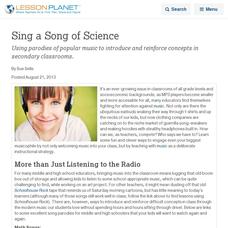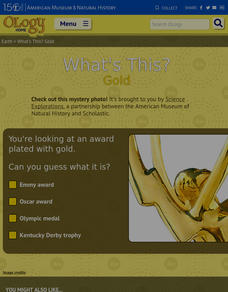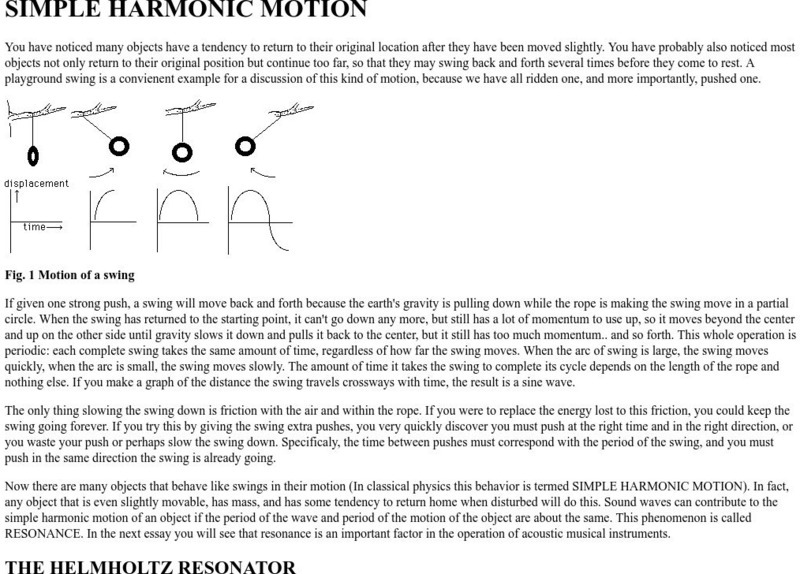Curated OER
Sing a Song of Science
Using parodies of popular music to introduce and reinforce concepts in secondary classrooms.
Scholastic
Study Jams! Current Electricity & Electric Circuits
Set to upbeat instrumental background music, eight slides present pictures of electrical wires, batteries, and appliances, Each slide is accompanied by a few sentences that introduce viewers to concepts related to current electricity....
American Museum of Natural History
They Glow!
Let there be light! An interactive online lesson describes the process of bioluminescence and how ocean species use it to their advantage. The lesson highlights several specific species as well as provides vocabulary support with...
Curated OER
General Knowledge Questions- All School Subjects Lower Intermediate
For this interactive general knowledge worksheet, students complete 24 multiple choice questions based on their knowledge in several subject areas. These subjects include science, geography, sports and music.
American Museum of Natural History
They Glow!
Would you believe marine animals can make their own light? An online resource describes the process of bioluminescence and how animals in the ocean use it to survive. The lesson features a catchy tune that describes the behavior of ocean...
American Museum of Natural History
What's This? Gold
Cell phones are likely made of gold—at least part of them! An interesting lesson explains the conventional and not-so-conventional uses of the popular element gold. From the Inca empire to modern-day technology, learners discover gold...
Tinybop
The Human Body
Examine the systems of the human body with a bold, charming, and kid-friendly application. This noteworthy tool is certain to get kids interested what goes on inside of them! The eye feature uses the tablet camera to view images and show...
Curated OER
The Vibrational Nature of Sound
Young scholars explore the vibrational nature of sound. In this science lesson plan, students gain an understanding of sound frequency, pitch, and conduction using the string telephone, tuning fork and musical glasses experiments.
Scholastic
Study Jams! Natural Resources
Use this slide show to introduce your class to some of our most useful natural resources. The text beneath the photographs differentiates between renewable and non-renewable resources. The need for conservation of resources and human...
Curated OER
My Five Senses
Students explore their 5 senses. In this 5 senses lesson, students participate in activities that require them to use the senses of smell, touch, hearing, taste, and sight.
Curated OER
Science, Sounds And Hearing
Students examine various sounds that are played on musical instruments. They conduct an experiment to listening to different instruments. They define significant vocabulary like "vibration" and "oscillation". Students suggest ways that...
Curated OER
Fun with Phylogenetic Trees
Tenth graders differentiate angiosperms and gymnosperms. In this biology lesson, 10th graders construct a musical phylogenetic tree from information they gathered on resource websites. They present their project in class.
Curated OER
Energy and Mass-Same Things But Different!
In this energy and mass worksheet, students read about Einstein's formula, E=mc2 and they solve six problems. They convert from different energy units to different mass units using a given formula.
Curated OER
Fourth Grade Science
In this science worksheet, 4th graders complete multiple choice questions about electricity, the sun, sound, and more. Students complete 25 questions.
Curated OER
Sound/Pitch
Students explore how pitch changes when using instruments that are plucked, blown, and hit. In this sound and pitch lesson, students blow across the top of bottles that are filled with water to create sound. Students use recorders...
Curated OER
4th Grade Science
For this physical science worksheet, 4th graders complete multiple choice questions about force, simple machines, communication and more. Students complete 25 questions.
Curated OER
Limu and ME!
Students explore limu. In this cross curiculum botany and art project, students view a limu-picking film and then collect several species of limu. Students follow a sequence of instructions using limu, card stock and wax paper to create...
Other
Ucsc Electronic Music Studios: Simple Harmonic Motion
Simple harmonic motion is described and explained and related to a Helmholtz resonator. Relation between simple harmonic motion and a vibrating air column is clearly made in an effort to explain why a pop bottle resonates when blowing...
Massachusetts Institute of Technology
Mit: Inventor of the Week: Robert Moog
Robert Moog fused his love music and electronics when he invented the synthesizer. This website includes background information on the creation of the synthesizer and provides several links.

















